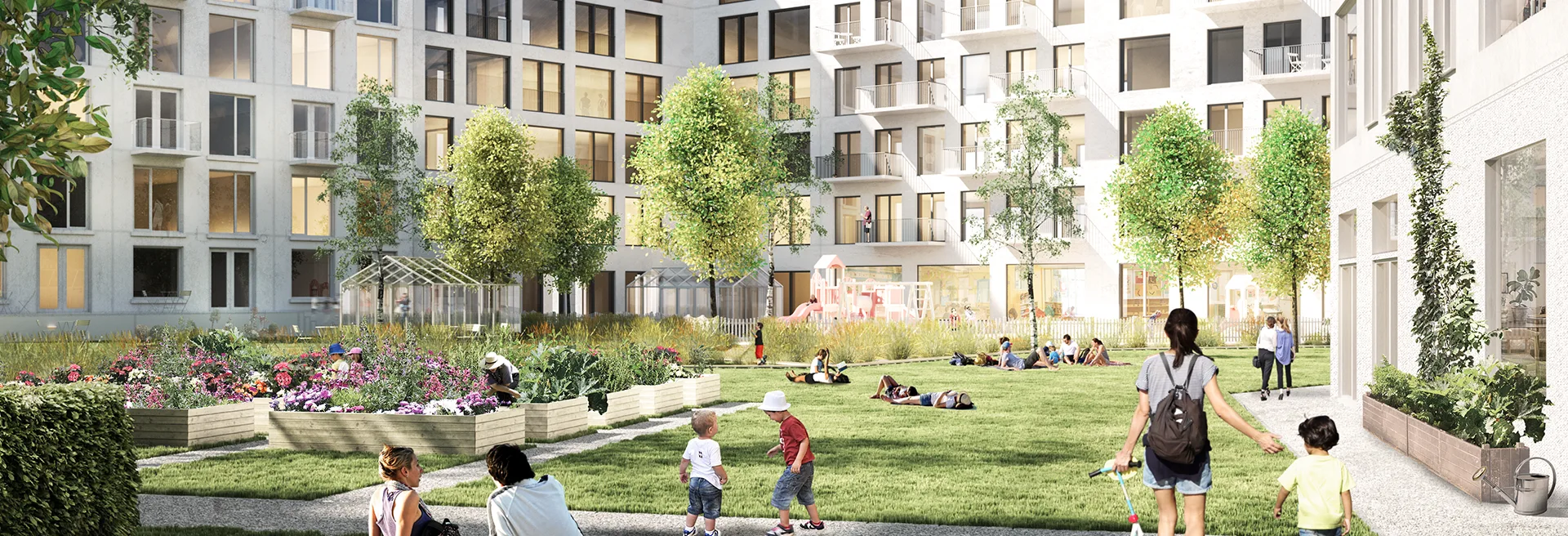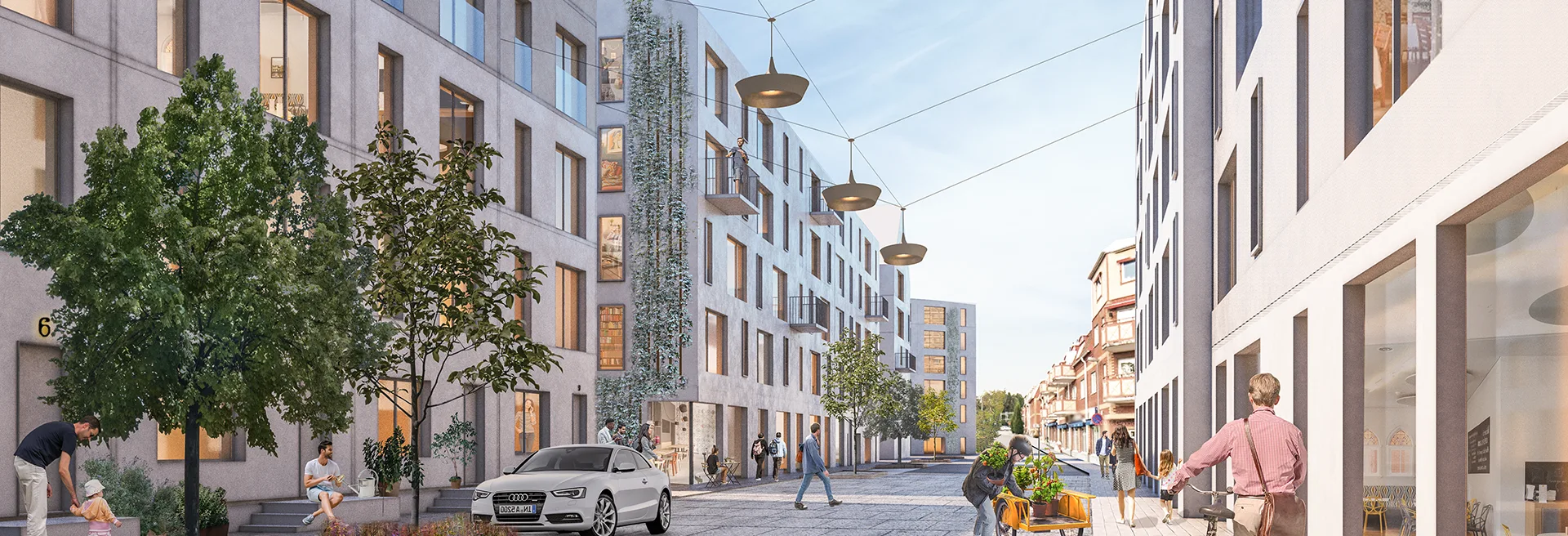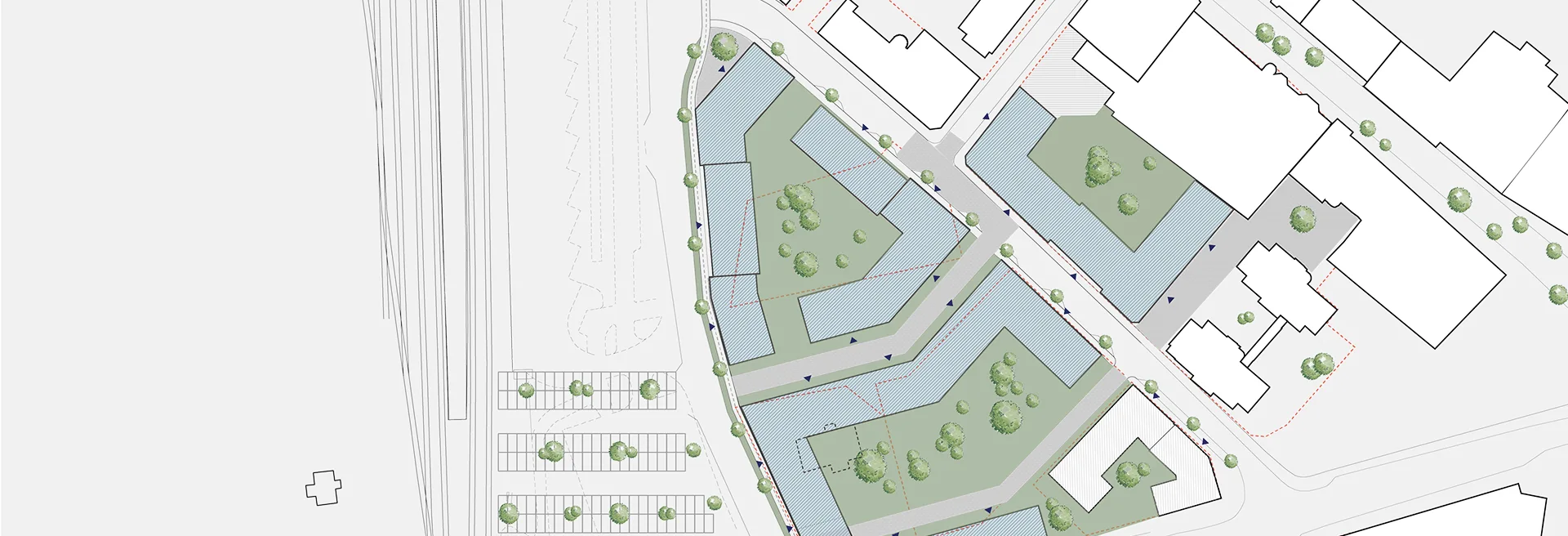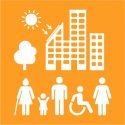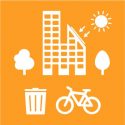The new neighborhoods next to the railway aim to consolidate Värnamo’s identity as a sustainable and forward-looking small town. These neighborhoods are in central Värnamo and will be a valuable addition to the city by improving the human and environmental conditions. A supplement consisting of housing, service, elderly homes and a preschool. Nyfosas proposal focuses on creating good conditions for social gatherings, transforming paved parking areas into green courtyards and sustainable mobility options with pedestrians and cyclists prioritized in the city center.
Content
Background
The city of Värnamo as we know it today is strongly associated to the construction of the railway between 1877-1902. During this period, the population of the city grew from around 300 inhabitants to over 3,500. Another sign of Värnamo’s growing role as a commercial and industrial city from that same time period is the buildings that were established. Expensive public buildings such as the train station, town hall and trading buildings are examples of this. Important companies such as “Gummifabriken” were established, strategically located next to the railway station. The industry grew rapidly and when the entreprenour Birger Svensson bought the factory during the 1930s, the factory expanded from 8,000 sqm to 18,000 sqm. The factory helped put Värnamo on the map and, with its new content is still a very relevant landmark at the end of the city’s central trade route. Värnamo has continued to grow and since the mid-1900s the city has had a increase in population growth, with small business owners benefitting from the municipality’s central location. Citizens are attracted by a growing supply of cultural and recreational possibilities.
Proposal
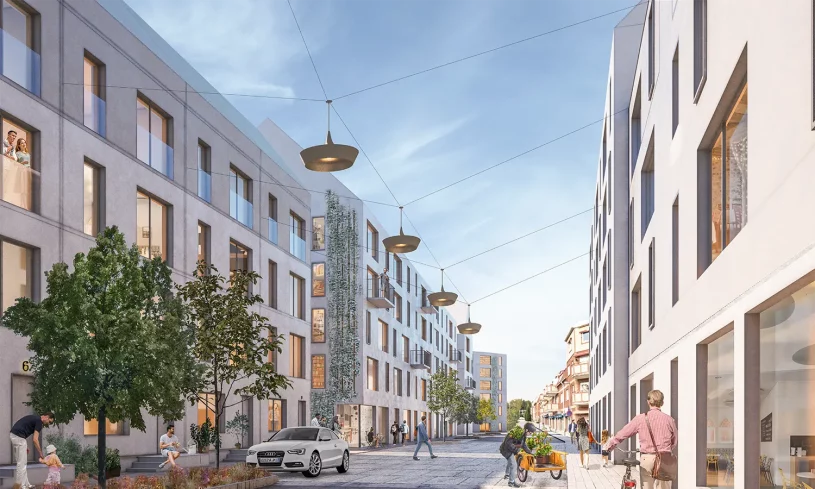
New urban neighborhoods
The proposal involves changing the neighborhood into mainly residential housing with some possibilities for workshops and service in the ground floor. A building combining housing for the elderly and a preschool will create new community facilities in a central location. A mix of housing typologies is proposed, offering a range from large apartments with rentable units to town houses with the possibility of apartments on top. A mixture of functions in the neighborhood will create the right conditions for generating life and activity at all hours. Entrances facing the street and more residents and visitors living in and around the area will help to create security and give rise to increased prioritized movement for pedestrians and social functions.
Mobility
Cyclists and pedestrians are prioritized in street spaces and a common parking solution reduces the need for outdoor parking spaces, creating more space for generous and green courtyards. The existing viaduct is being worked into the plan to reduce its experience as a barrier in the city. This is done by a city block docking to the viaduct and thus connecting the two sides. The proposal also influences areas beyond their property boundaries, with a proposal for more efficient use of space and enabling new meeting places.
-
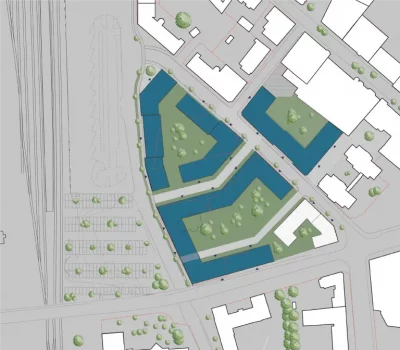 Plansketch 1 (left) and 2 (right)
Plansketch 1 (left) and 2 (right)
-
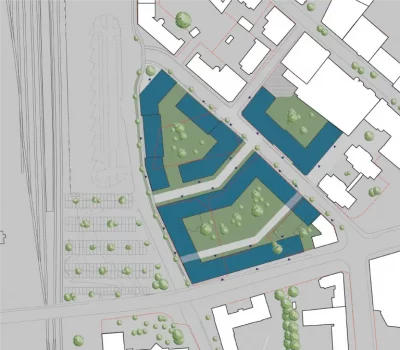
A well-defined neighbourhood structure has been the basic principle for both proposals. This contributes to creating unrestricted street spaces on the outside as well as green, pleasant courtyards on the inside. At the same time, it is possible to cross through the blocks via passages. This provides good links across between Västermogatan and Myntgatan, while also allowing evacuation spaces and access. Within Plan Sketch 1, the existing buildings are largely preserved and supplemented with new efficient land use around them. Within Plan Sketch 2, which is based on the same basic principle as Plan Sketch 1, the property Bodarna 2 is also developed with new construction. This involves adding a new modern element to the older parts of the property that are preserved.
Sustainability
An important part of the identity of the railway quarter will be the well-integrated sustainability aspects that are incorporated into the plan. Social sustainability aspects can be, for example, different types of housing, shared terraces/urban farming, mixed community services. Examples of ecological aspects are allotment gardens and energy generated by solar panels. You can achieve sustainable mobility by promoting pedestrian and bike flows instead of using transportation that consumes fossil fuels. By combining various functions and forms of tenancy, such as the preschool and elderly home, the neighborhood will become a more open and diverse social space for all types of people to meet.
Vegetation on the streets and courtyards are an important in part of the proposal. These spaces will be used for stormwater management and will be given plenty of space for vegetation to grow. The common spaces will also promote allotment gardening and urban farming. The proposal ties together opportunities for solar cells and urban farming with the intention to create an environmentally-friendly area with added value and enhanced ecosystem services. Currently large parts of the open spaces are taken up by outdoor parking areas. These will be transformed use that land more efficiently. More specifically, the parking areas towards the railway tracks are expanded, where visitor parking during the day and residential parking during the evening and weekends can make the utilization more efficient. Generous amounts of space are dedicated to bicycle lanes and bike storage at ground level while a mobility center with opportunities for carsharing and lending out cargo bikes will help promote more sustainable forms of transport rather than cars.
By densifying and building in a smart way on already utilized ground, the city of Värnamo can develop in its central parts without damaging existing nature and surroundings.
Map
Want to know more about the project?
Feel free to contact one of the project's contact persons
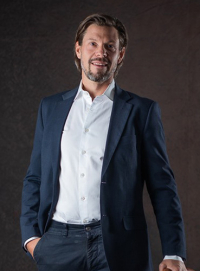
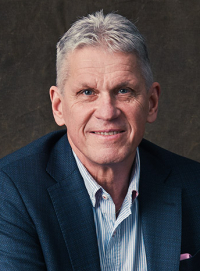
Latest projects
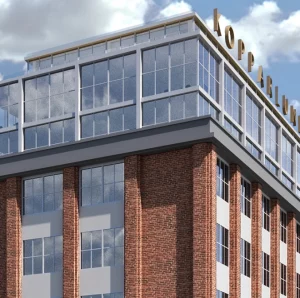
In progress
Västerås | Kopparlunden South
Enriched industrial environment that is revived in central Västerås
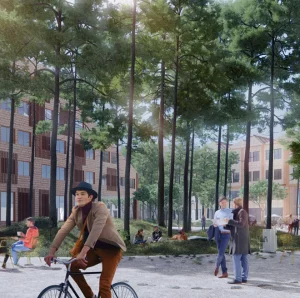
Forthcoming
Luleå | Storheden City
The future marketplace in Luleå
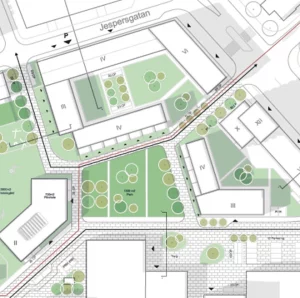
In progress
Malmö | Bryggeriet (The Brewery)
A mix between unpolished industrial environment and a green sustainable neighborhood
